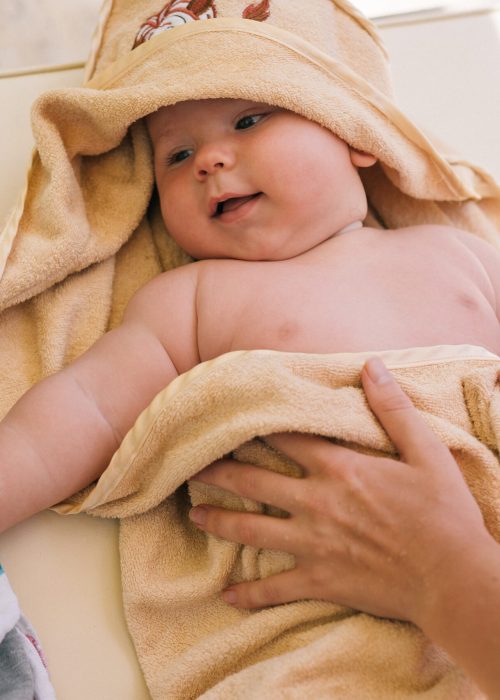How to Become a Birth Photographer: Capture Life's Precious Beginnings
Birth photography is an incredible niche that marries the beauty of human life with the art of photography. However, this career path is not for the faint-hearted, and it requires technical skills, emotional intelligence, and a deep understanding of the human birthing process. This comprehensive guide will walk you through the steps to becoming a birth photographer.
Understanding Birth Photography
Birth photography captures one of the most transformative experiences in a person’s life – the birth of a child. As a birth photographer, your role extends beyond just taking pictures. You are a silent witness to intense emotions, capturing intimate moments that become timeless memories for the family. Unlike posed newborn or maternity photos, birth photography documents the raw, unscripted journey of childbirth. You can write about this essay using EssayPro.com.
The beauty of birth photography lies in its unpredictability. It’s about embracing the chaos and turning it into a coherent, touching narrative. It also involves long hours and unpredictable schedules, as labor and birth do not adhere to the 9-5 workday. The reward, however, is profound – the chance to be part of a family’s life-altering moment and turning it into a beautiful visual story.
Required Skills and Qualities
Birth photography requires a unique skillset. First and foremost, you need technical knowledge of photography – understanding light, composition, and how to operate a camera under changing conditions. Since birth photography often happens in low-light environments, mastering low-light photography is essential.
Interpersonal skills are equally important. You need to make your subjects feel comfortable and safe in your presence. Patience, empathy, and sensitivity are crucial, as you’ll often work with women in a vulnerable state.
Finally, physical stamina and resilience are needed to cope with irregular hours and the demands of labor and delivery environments.
Explore the pinnacle of excellence with our dedicated nursing paper writing services. Chech out PaperWriter.com and get help. We recognize the importance of precision and expertise in nursing academia, and our specialized team is committed to delivering meticulously crafted papers that align with your nursing studies. From case studies to research papers, our service offers comprehensive assistance tailored to your specific requirements. Trust us to provide well-structured and insightful content that showcases your nursing knowledge.
Educational Background and Training
There is no specified educational path for becoming a birth photographer. A background in photography or a related field can be beneficial. Many photographers start with general photography courses or a degree and then specialize in birth photography through additional courses or self-study.
Many professional organizations and websites offer birth photography workshops and certifications. These programs cover topics like safety protocols, business management, and ethics, alongside practical photography skills.
Moreover, understanding the birthing process is vital. This knowledge can be gained through reading, attending workshops, or shadowing healthcare professionals and also after reading papers by graduate paper writing service essayservice.com. Understanding the stages of labor and birth can guide your work and help you anticipate key moments to capture.
Essential Equipment for Birth Photography
A reliable, high-quality camera that performs well in low light is the most important piece of equipment for a birth photographer. Fast lenses are also crucial, as you often won’t have the luxury of staging your shots or adjusting the room’s lighting.
A wide-angle lens can be useful for capturing the entire scene, including the delivery room environment. A prime lens, on the other hand, is excellent for intimate shots of the mother, newborn, and family.
Additional gear might include an external flash (to be used respectfully and sparingly), extra batteries, and memory cards. Backup equipment is essential in case of technical failure. Lastly, quiet camera shutters or mirrorless cameras can be less disruptive in the birthing space.
Legal and Ethical Considerations
Legal and ethical considerations are paramount in birth photography. You’ll need to understand and comply with hospital regulations, privacy laws, and professional codes of conduct.
Before shooting, always obtain informed consent from the birthing person and anyone else appearing in the photos. Be clear about what you’ll be photographing and how the images will be used.
Respect boundaries and understand that your role is to document, not intervene. Every person’s comfort levels and privacy needs are different, so flexibility and respect should guide your work.
Building Your Portfolio
Your portfolio is your professional calling card. It showcases your style, skill, and the unique perspective you bring to birth photography.
As you start, you might work for reduced rates, or even pro bono, to build up your portfolio. Always seek permission to use these images in your portfolio. Be sure to capture a variety of shots – wide-angle room scenes, close-ups, candid moments, emotional reactions – to show your range and versatility.
Marketing Your Services and Growing Your Business
A successful birth photography business requires effective marketing. Your online presence, including your website and social media platforms, should reflect your brand and style. Regularly update your portfolio, share behind-the-scenes peeks, client testimonials, and personal stories that connect with potential clients.
Networking with birthing professionals like doulas, midwives, and obstetricians can also be beneficial. They can recommend your services to expecting parents.



Real-Life Experiences and Testimonials
Hearing from other successful birth photographers can provide valuable insight and inspiration. Professional forums, workshops, and online groups can offer opportunities to learn from experienced photographers.
Testimonials from past clients can be powerful marketing tools. They provide real-world proof of your skills, professionalism, and the value you add to the birth experience.
Becoming a birth photographer is a journey that requires skill, passion, and commitment. With the right preparation and approach, you can build a rewarding career that beautifully blends art and the miracle of life.